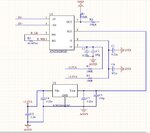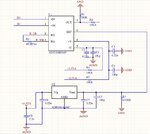tony_lth
Advanced Member level 5
Hi,
I want to set a voltage to the AD8226 REF terminal.
From AD8226 datasheet, it says, "For the best performance, source impedance to the REF terminal should be kept below 2 Ω."
ADR280 is a voltage ref at my hand, can its output directly link to the ref pin of AD8226?
Best,
Tony Liu
- - - Updated - - -
I want to set 1.2V as ref to AD8226.
I want to set a voltage to the AD8226 REF terminal.
From AD8226 datasheet, it says, "For the best performance, source impedance to the REF terminal should be kept below 2 Ω."
ADR280 is a voltage ref at my hand, can its output directly link to the ref pin of AD8226?
Best,
Tony Liu
- - - Updated - - -
I want to set 1.2V as ref to AD8226.

